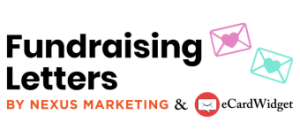6 Best Outreach Methods for Your Next Capital Campaign
Capital campaigns can be absolutely critical to take your nonprofit’s work to the next level. These campaigns are concentrated fundraising efforts meant to raise a significant amount of money to advance your mission.
Your nonprofit might decide to launch a capital campaign to construct a new building, create a new program, or purchase a necessary but expensive piece of equipment. No matter what level of experience your organization has with capital campaigns, an outreach refresher will help you make the most of your campaign communications.
Your capital campaign will involve two outreach phases: the quiet phase, where you reach out to your existing network of major donors, and the public phase, where you introduce your campaign to the general public and solicit final donations to your cause.
In this guide, we’ll review six outreach best practices to help raise donations for your campaign and build long-lasting supporter relationships during both phases. Here’s what to expect:
- Quiet phase outreach best practices
- Public phase outreach best practices
Bloomerang’s donor management guide recommends striking a communication balance “to ensure you’re engaging with donors regularly without overwhelming them.” These outreach methods will allow you to create a multichannel communication strategy that appeals to donors while still driving you toward your goal.
Quiet phase outreach best practices
The first stage of your capital campaign is the quiet phase. In this phase, you’ll set up meetings with your major donors to see if they’re interested in supporting your current campaign.
At this time, you’ll receive the largest donations to your campaign, so it’s important to optimize your outreach efforts to make significant strides toward your goal.
One of your greatest outreach assets in the quiet phase of your capital campaign is your nonprofit’s donor management software. You can use the information stored in this system to identify past major donors to connect with and supporters who have the potential to become major donors. For instance, your regular mid-tier donors who have the capacity to give more might be willing to do so because it’s a one-time campaign designed to accomplish a single specific goal.
Look for these opportunities in your donor database by analyzing the potential generosity of your existing supporters as well as their engagement metrics. Supporters with a high giving capacity who are regularly engaged with your organization are the most likely to contribute during the quiet phase of your campaign.
Use these strategies to reach donors:
1. Send fundraising letters.
Even though it may seem old school, a well-crafted fundraising letter can make all the difference in boosting capital campaign donations.
Use fundraising letters to reach out and inform supporters about your campaign before setting up a meeting, or send a letter after a meeting to put the information you’ve discussed in writing and make a final appeal.
When you’re ready to write your letters, you can use a donation request template to speed up the process. Use these tips to customize these templates to your capital campaign:
- Describe the goal of your capital campaign and how it fits into supporting your organization’s overarching mission.
- Tell a compelling story of how the fundraising from your capital campaign will enhance your organization’s ability to help people in the community. Focus on telling the stories of individual community members to connect your campaign to real impacts.
- To personalize your letters, greet your recipients with their preferred names and ensure that the fundraising request amounts you pose are tailored to their capacity and willingness to give.
- Customize the templates to match your organization’s tone and brand. Include your unique brand logo, colors, and typography.
- Sign the letters with your name and contact information so supporters can reach out with any questions.
In the quiet phase, you’re asking for a significant level of support from your major donors. Ensure the tone of your outreach letters reflects the seriousness of your request and the depth of your gratitude to donors.
2. Call potential and existing donors.
Some major donors may prefer personalized phone calls over letters or email communications. Specifically, you might want to use your outreach phone calls to see if donors might be willing to be a sponsor of your capital campaign kickoff event or contribute a general campaign donation.
These tips will help you have successful phone conversations:
- Make your calls during the evenings from 6-9 p.m. when people are generally at home and done working for the day.
- Use donor data from your CRM to reference the donor’s specific history of engagement with your organization and explain how grateful you are to have their continued support.
- Use a script for reference to keep the conversation on track and include a personalized ask amount for each donor.
According to a Bloomerang study, well-timed phone calls after donors give to your campaign can boost your organization’s retention rate. Calling donors more than once after they donate boosted donor retention to 58% compared to 33% for those who didn’t receive any phone calls. Making phone calls both during and after your campaign can propel your donor stewardship efforts.
3. Optimize your campaign website.
As the quiet phase winds down and you start preparing to introduce your campaign to the public, ensure your website’s capital campaign content is optimized for educating the public on the goal of your campaign and providing easy access to donation pages.
Your capital campaign website can be a separate microsite linked from your main organization site or a page within your website. Be sure this optimized information is ready to be pushed live on the day when you kick off the public phase of your capital campaign.
Your capital campaign page or website should include an overview of the campaign’s goals and illustrate the ways that donations will help achieve your mission. Include prominent call-to-action buttons that encourage supporters to “Donate now!” and take them to a well-designed donation page where they can easily input their payment information.
Consider online advertising, such as Google or Microsoft ads, to promote your capital campaign web pages to a broader audience. You can also look into applying for the Google or Microsoft Ad Grant program to earn free advertising that you can use to promote your campaign more widely on search engines.
Public phase outreach best practices
After you’ve received the support of several major donors in the quiet phase of your capital campaign (nonprofits typically receive anywhere from 50-70% of total capital campaign donations during the quiet phase), you’re ready to launch into the public phase of your campaign. In this step, you’ll gather support from the larger community for your cause.
This phase aims to reach out to as many potential donors as possible using public-facing events and communications. Your outreach efforts should focus on energizing your audience to reach your fundraising goals.
Let’s dive into some public phase outreach ideas:
1. Incorporate giving (and fun!) into your kickoff event.
Your kickoff event will set the tone for the rest of your capital campaign, so use it to generate buzz at the start of the public phase.
Whether you host a virtual or in-person kickoff event, make sure it’s educational and engaging. MemberClicks recommends using event engagement strategies such as:
- Giveaways
- Q&As
- Trivia
- Live performances
Use your kickoff event to not only make people aware of and excited about your capital campaign but also provide donation opportunities during the event itself. Encourage virtual or in-person event attendees to visit your online donation page. Keep a running log of donations received on your website to allow donors to see how their contributions are pushing you further toward your goals. Creating and refreshing a fundraising thermometer graphic is a fun way to continuously update supporters.
2. Reach out via social media.
Social media can be an effective way to connect audience members to online giving opportunities throughout your capital campaign. Depending on the size of your social media following, your campaign posts have the potential to reach hundreds, if not thousands, of potential supporters of your cause.
Post to social media platforms like:
- TikTok
Ensure your social media posts are concise so anyone who scrolls past immediately understands the purpose of your campaign and how their donations can help achieve your goal. Also, use the unique features of each platform to better appeal to followers. For example, you might promote your campaign using a Facebook or Instagram story, a unique Twitter hashtag, or a TikTok trend.
3. Follow up with thank you letters.
As the donations pour in during the public phase of your campaign, thank each donor with a personalized message of gratitude.
Demonstrating appreciation is a crucial part of donor retention. Boosting your donor retention rate has major payoffs because your organization won’t have to spend as much time or money on donor acquisition and donors tend to give in higher quantities over time.
Go above and beyond to show your appreciation to donors to boost your donor retention rate. For example, in addition to an initial thank you in the donation confirmation email, you might also send a handwritten letter or host an appreciation event after the campaign ends. Donor appreciation letters help supporters feel valued, leave donors with a positive impression of your organization, and encourage them to stay engaged in your mission.
You’ve already gotten the attention of an abundance of capital campaign donors. Now, you can focus ongoing outreach and communication efforts on converting these capital campaign donors into repeat donors who are actively engaged with your organization.
With these outreach strategies in mind, your next capital campaign can thrive at any stage. By putting donor relationships at the forefront of your outreach efforts, you can gain the support of a wide range of people in your community, allowing you to build strong donor relationships that will persist even after your campaign concludes.
Co-Founder and current Chief Relationship Officer at Bloomerang.

He has served this sector for 33 years and is considered the most well-known senior statesman whose advice is sought constantly.
Prior to Bloomerang, he was the CEO and Co-Founder of eTapestry for 11 years, which at the time was the leading SaaS technology company serving the charity sector. Jay and his team grew the company to more than 10,000 nonprofit clients, charting a decade of record growth.
He is a graduate of Butler University with a B.S. in Business Administration. Over the years, he has given more than 2,500 speeches around the world for the charity sector and is often the voice of new technology for fundraisers.




